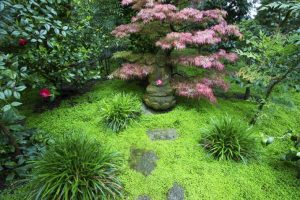The Indian sculptures of ancient times, classical antiquity, and the medieval period can be found all over the world in the most prominent and respected museums. The replication of these sculptures has traditionally been relegated to mass production of souvenir items or commemorative and decorative pieces. Based in New Delhi, the studio Asiatiques Gallery has an artistic mission is to maintain fidelity to the aesthetics of the Gandhara, Pala, Gupta, and other styles. Raoul Saigal is one of the co-founders of Asiatique Gallery, and he spoke with BDG about the uniqueness of his sculptural calling.
BDG: How did you developed a passion for Buddhist sculpture? And how did the faithful replication of art become your main specialty?
Raoul Saigal: My journey into Asian and Buddhist art began with my sense of being Indian-born and brought up in Hong Kong for the first eight years of my life. Although my parents were both from India, I grew up in the beautiful city in the early 1980s. My appreciation for Buddhist and Asian arts was probably developed by first our own apartment where my mother, being an art teacher, had our entire home decorated with all manner of Buddhist sculptures and paintings. Along with being surrounded by Southeast Asian art, our home also had plenty of Hindu statues in our prayer room. It was an eclectic mix of the two Asian religions at a very impressionable young age that resulted in my fascination with and proclivity toward Buddhist sculptures.
We moved back to India in 1989. New Delhi was a big change for me, both culturally and socially. I missed Hong Kong terribly. I found solace in the Asian Buddhist artwork that my mother had brought back from Hong Kong—as now in our new home in New Delhi, her collection of Indian Hindu art became significantly larger. I also saw local craftsmen on the roads in New Delhi making small carvings of Hindu deities as well as the iconic Shakyamuni Buddha seated in his earth-touching pose and I was fascinated by how they could make both. I fell in love with watching the painstaking carvings of these small roadside creations come to life with a simple block of stone and chisel and felt that these people were true artists.
I left to pursue a master’s degree in business economics in the US. Although I worked on Wall Street, I remember visiting the Metropolitan Museum of Art (the Met) in New York one weekend and being blown away by the Gandharan sculptures on display! I couldn’t believe that the subcontinent had birthed this incredible fusion style of Greco-Buddhist art work that was so grand in scale. The proportions of the sculptures and the Hellenistic influences mixed with the Asian and Persian styles proved captivating and enticing. The elegant postures and the realism of the draperies was also so fascinating to witness up close. It was truly love at first sight. I also saw other antique Indian works on display, including Pala and Gupta period pieces, and the whole range and diversity of this art was breathtaking.
When I searched for more images of Gandhara, I found a few stores in NYC and in the US that were actually selling authentic Gandharan sculptures and other Indian antiques. But the prices were astronomical. When I visited my parents that summer in India, our car would pass by some of those roadside sculptures of more simplistic Buddhist art pieces.
That got me thinking: what if these same talented artists, with a little more financial incentive and resources, could make something similar to the old style of Indian art such as Gandharan, Pala, Gupta, and so on?
This was really the seed that started me thinking of making this ancient and beautiful, but dying art form more affordable and more celebrated worldwide by producing it at a fraction of the cost without compromising on the beauty and the style that made it unique.
BDG: What are some of your favorite examples of Gandharan, Pala, and Gupta sculptures?
RS: I feel that the seated Bodhisattva Padmapani at the British Museum is a truly stunning work. The tall towering Maitreya Bodhisattva at the Met is also a very commanding and exquisite work that left a deep impact on me.
In terms of Pala period pieces—again there are so many pieces to choose from and view at museums especially in New Delhi’s National Museum itself—I think one would have to mention the recently auctioned, record-breaking, 900-year-old Pala sculpture of the Buddhist deity Lokantha that made the news just last month, selling at Christie’s for US$25 million! It looks like an absolutely colossal work at almost 60 inches [152 centimeters] tall and the fact that it hadn’t been seen publicly at all in almost half a century makes it a true enigma!
Gupta period works have their own charm in sandstone, but I think my favourite and the one that left a huge impact on me would be the giant standing Buddha Offering Protection that is at the Met.
BDG: Tell us about your studio’s team.
RS: “Team Buddha” consists of my partner Rajesh Kumar, myself, and our team of craftsmen, who have been with us for well over a decade.
Rajesh comes from a long lineage of master artists. These craftsmen were learned in the ancient traditions that were faithful to the periods of Gandharan, Pala, and Gupta art. The artisans and craftsmen in our workshop carry with them the legacy, knowledge, and ancient techniques and skills of their forefathers stretching back centuries.
These unparalleled and peerless sculptures that celebrate the lost art of ancient India cannot be found anywhere else in the world. We pride ourselves on being able to meticulously reproduce works of lost age and period to almost exactly the same characteristics, in some cases even adding to their ancient beauty. Our team spends months conceiving these replica figures, completely handmade without machines. These techniques come from some of the oldest civilizations in the world. Whether it is the Greco-Roman influence of the Gandharan period—dating from the second century to the fifth—or the Gupta period works that exemplified a golden age for Indian art.
From the erotic and sensual period of Khajuraho to the most popular and sought-after period of Pala sculptures from the 9th–12th centuries, our sculptures are wanted across the world by the biggest galleries and showrooms as a rare example of an ancient art form.
We price our sculptures at a fraction of what the original works sell for, despite the fact that we carve from the same ancient stone with the same techniques from over 2,000 years ago. Everyone should have a chance to own a piece of ancient history.
BDG: Is your studio contributing to spreading awareness in India of Buddhist sculpture?
RS: Yes, one of the primary aims of our business is to spread awareness of this incredible ancient art in its various forms to a global audience outside of India. We want to make examples of this ancient art form affordable to a larger number of people without compromising on the quality or level of detail, and by sticking to only using handheld tools.
BDG: Do you collaborate with researchers or scholars when updating your catalogue of sculpture works?
RS: No, not yet. But we would cherish the opportunity to work with BDG and gain from your expertise in this fascinating field of art!
See more
Asiatique Statues
Buddha Offering Protection (The Met)
Related features from BDG
Buddhica Antiqua: Preserving Ancient Buddhist Heritage with the Digitalisation of Gandharan Artefacts Team
Metropolitan Museum of Art to Showcase “Tree & Serpent: Early Buddhist Art in India, 200 BCE–400 CE”
Related news reports from BDG
“Tree and Serpent” Exhibition Brings Buddhist Art to the Met in New York
Related posts from BDG’s Tea House Blog
Pioneering Preservation: The Digital Heritage Centre’s Heritage Photography Workshop
Conservation Up Close



















